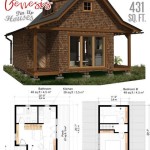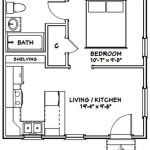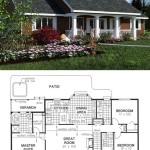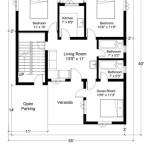Outhouse Plan: A Comprehensive Guide to the Future
The concept of an outhouse, historically a simple, unplumbed outdoor toilet, is undergoing a significant transformation. Modern iterations, often referred to as composting toilets or off-grid sanitation solutions, represent a sustainable and increasingly sophisticated approach to waste management. This guide provides a comprehensive overview of outhouse plans, focusing on advanced systems and future trends in off-grid sanitation.
Traditional outhouses presented numerous environmental and health challenges. Odor control was minimal, sanitation was questionable, and the impact on surrounding soil and water sources could be detrimental. Modern outhouse planning, conversely, prioritizes environmental responsibility, user comfort, and compliance with evolving health and safety standards. The transition from rudimentary pit latrines to advanced composting toilets is driven by growing awareness of resource conservation, waste reduction, and the importance of protecting ecosystems.
A future-oriented outhouse plan considers several key factors, including waste treatment methods, ventilation systems, user accessibility, and aesthetic integration with the surrounding environment. These plans often incorporate innovative materials, advanced composting processes, and technologies designed to optimize efficiency and minimize environmental impact. The guide provides in-depth information on these aspects, assisting in informed decision-making regarding the implementation of sustainable sanitation solutions.
Understanding Composting Toilet Technology
At the heart of modern outhouse planning lies the composting toilet. This technology relies on aerobic decomposition, where microorganisms break down human waste and toilet paper into a stable, humus-like material. Unlike traditional flush toilets that require significant water consumption and sewage infrastructure, composting toilets use little to no water. This makes them ideal for off-grid locations, environmentally conscious individuals, and areas facing water scarcity.
There are two primary types of composting toilets: self-contained units and central composting systems. Self-contained units are typically smaller and suitable for individual use or low-volume applications. Waste is deposited directly into a composting chamber located beneath the toilet seat. These units require regular maintenance, which involves turning the compost to aerate it and periodically removing the finished compost.
Central composting systems, on the other hand, are designed for higher-volume applications and can serve multiple toilets or even entire buildings. These systems typically involve a larger composting chamber located separately from the toilet facilities. Waste is transported to the chamber via a gravity-fed system or a vacuum system. Central composting systems require more complex installation and maintenance but offer greater capacity and efficiency for larger-scale applications.
The success of a composting toilet depends on maintaining the right balance of carbon, nitrogen, oxygen, and moisture within the composting chamber. Carbon is provided by adding bulking agents such as sawdust, wood shavings, or shredded leaves. Nitrogen is derived from the human waste itself. Oxygen is essential for aerobic decomposition, and proper ventilation is crucial. Moisture levels should be carefully monitored to ensure optimal composting activity. Too little moisture can slow down decomposition, while too much moisture can lead to anaerobic conditions and unpleasant odors.
Proper ventilation is achieved through a combination of natural and forced air systems. A vent pipe extending from the composting chamber to the roof allows for the upward flow of air, removing odors and moisture. A fan can be added to enhance ventilation, particularly in enclosed spaces or during periods of high humidity. The vent pipe should be designed to prevent backdraft and ensure adequate airflow.
Designing for Accessibility and User Comfort
An often overlooked aspect of outhouse planning is accessibility. A future-oriented outhouse should be designed to accommodate users of all abilities, including those with mobility impairments. This involves ensuring adequate space for maneuvering wheelchairs or other mobility devices, installing grab bars for support, and providing accessible toilet seats.
The Americans with Disabilities Act (ADA) provides guidelines for accessible toilet facilities, including requirements for door width, turning radius, toilet height, and grab bar placement. While these guidelines are primarily intended for public restrooms, they can serve as a valuable reference for designing accessible outhouses. Adhering to these guidelines ensures that the outhouse is usable and comfortable for everyone.
Beyond accessibility, user comfort is also a crucial consideration. The outhouse should be well-ventilated to minimize odors and improve air quality. Natural lighting can enhance the ambiance and reduce the need for artificial lighting. A comfortable toilet seat, adequate privacy, and a clean and well-maintained environment contribute to a positive user experience.
The use of durable, weather-resistant materials is essential for ensuring the longevity of the outhouse. Pressure-treated lumber, composite decking, and metal roofing are popular choices for their resistance to moisture, insects, and decay. Proper insulation can help regulate temperature and reduce condensation, particularly in colder climates. The exterior of the outhouse should be aesthetically pleasing and blend harmoniously with the surrounding landscape.
Integrating Sustainable Technologies and Materials
The future of outhouse planning is inextricably linked to the integration of sustainable technologies and materials. Solar power can be used to power ventilation fans, lighting, and other electrical components. Rainwater harvesting systems can provide a source of water for cleaning and flushing (if a water-assisted composting toilet is used). Green building materials such as recycled lumber, bamboo, and straw bales can reduce the environmental impact of construction.
Greywater recycling systems can be incorporated to reuse wastewater from sinks and showers for non-potable purposes, such as irrigation or toilet flushing. This reduces the demand for freshwater and minimizes the amount of wastewater that needs to be treated. Constructed wetlands can be used to treat wastewater naturally, utilizing plants and microorganisms to remove pollutants.
Advanced composting processes such as vermicomposting, which uses worms to break down waste, can enhance the efficiency and effectiveness of composting toilets. Biochar, a charcoal-like material produced from biomass, can be added to the composting chamber to improve aeration, reduce odors, and enhance nutrient retention. These technologies contribute to a more sustainable and environmentally friendly sanitation solution.
The selection of appropriate building materials also plays a critical role in the overall sustainability of the outhouse. Opting for locally sourced materials reduces transportation costs and supports local economies. Using recycled materials conserves resources and reduces waste. Choosing materials with low embodied energy, the total energy required to extract, process, and transport a material, minimizes the carbon footprint of the construction project.
Furthermore, proper waste management during construction is essential. Construction debris should be recycled or disposed of responsibly. Minimizing waste through careful planning and efficient material use reduces the environmental impact of the project.
Smart technologies are also finding their way into modern outhouse planning. Sensors can monitor temperature, moisture levels, and odor emissions, providing real-time data that can be used to optimize composting performance. Automated systems can control ventilation, aeration, and bulking agent addition, reducing the need for manual intervention. These technologies enhance the efficiency, reliability, and user-friendliness of composting toilets.
In conclusion, a comprehensive outhouse plan for the future necessitates a multi-faceted approach that considers environmental sustainability, user accessibility, and technological integration. By embracing advanced composting technologies, prioritizing accessibility considerations, and integrating sustainable materials and practices, it is possible to create off-grid sanitation solutions that are both environmentally responsible and user-friendly. The evolution of the outhouse represents a significant step towards a more sustainable and resilient future.

Chrisanthos Polykarpou On Linkedin Building A House In Cyprus Comprehensive Guide For Future Homeowners

The Ultimate Guide To Modern Farmhouses Houseplans Blog Com

Ppt The Ultimate Guide To Building Your Dream Home Powerpoint Presentation Id 12282398

The Complete Guide To Residence Design Book Strategy Residential

Planning A Home Budget Steps To Secure Your Future

Building A Sustainable Future Guide To Leed Certification

How To Choose The Right Neighborhood For Your New Home A Comprehensive Guide

Designing The Future A Comprehensive Guide To Home Automation S

Mastering Money A Comprehensive Guide To Financial Success Paperback Copperfield S Books Inc

You Can Guide Bridgton S Future But Community Survey Deadline Is This Weekend The News
Related Posts








